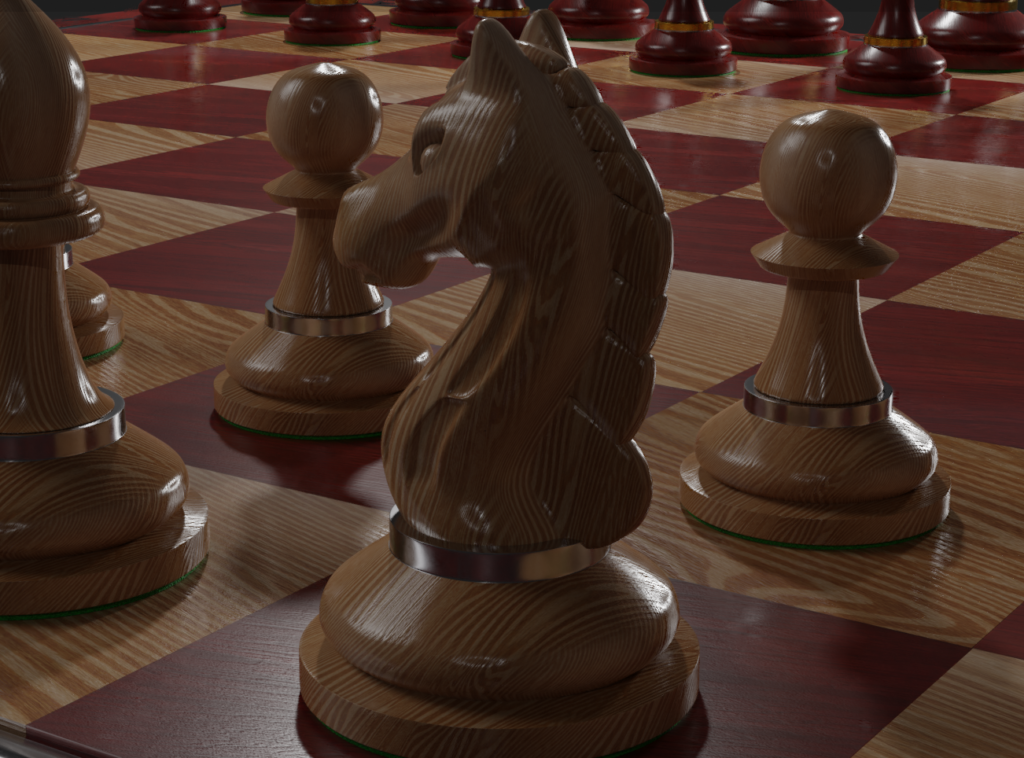
How can I get better with knights in chess?
Most beginners struggle with knights, both attacking with them and defending with them. Don’t fret. I have some exercises for you which will help you become a feared monster with your knights!
Improving your knight play in chess is a matter of practice! There are two simple exercises you can do to unlock the power of your knights. “Knight Site” and “Knight Moves.”
Follow these instructions and you will be dominating other players with your knight in no time!

Knight Site
This is a phenomenal exercise. When I first began doing this exercise it was a pain. Halfway through the first exercise, the squares the knight could jump to began to “light up” in my mind like they were being highlighted. I learned this exercise from Michael de la Maza’s book, “Rapid Chess Improvement.” Although some of the advice in the book is very sketchy, this exercise he recommends is worth the price of the book alone!
First, get out an actual chess board (not one online) and place your knight on a1, the bottom left square. Then physically touch with your finger the squares your knight can jump to. Physically touching them is very important! Your brain will learn faster through multiple senses!
After you touch b3 and c2, then move your knight to b1 and repeat the process. Then c1, then d1, then e1 so on and so forth. You will realize when your knight is on the edge, he is weak. When he’s in the center of the board he’s pretty fierce. Hence the old chess phrase, “a knight on the rim is dim.” I think I’m going to coin my own phrase though.
“A knight in the middle is critical.”
-Me, although I just made that up on the spot just now.
Repeat the process for all 64 squares. Don’t worry, you’ll get faster and faster! Look at the diagram below and behold what a monster the knight on e5 is!
Knight Moves
This exercise might sound like an old Bog Seger song, but it’s actually a critical drill! Knowing which squares a knight can jump to immediately is a helpful pattern to have galvanized in your mind, and Knight Site will help you to do that. However, knowing how many moves it takes to get your knight across a board is a massively helpful skill! Let’s say you’re participating in a game and you have to maneuver your knight across the board to stop a pawn from queening. Could you plot out 3 or 4 different routes in a matter of seconds? This drill will help you form that skill. This drill will help you spot possible knight forks two or three moves ahead! Knights are tricky and this drill will help in unlocking their power and mystery.
For an example of how difficult a knight can be sometimes, let’s look at the example below. Paradoxically, a knight on a1 requires the same number of moves to reach the square c3 as it takes to reach the square g6 (4 moves).
So remember, just because a square is close in proximity to a knight does not mean it’s easy to get to. And just because a square is far from a knight, doesn’t mean it’s difficult to get to.
So for this drill, begin with the knight on a1. Instead of touching the board this time, you’re going to perform this drill in your mind. Plot the knight’s jumps from a1 to b1. For example, a1 to c2, c2 to a3, a3 to b1. Move the knight back to a1 and then plot the jumps to c1. Move the knight back to a1 and plot the jumps to d1. Rinse and repeat, hitting all 64 squares from a1.
Try to do this drill every day. But on the second day, begin with your knight on b1, and on the 3rd day begin from c1. So on and so forth. If you perform these two exercises each day (I can do them both in about 30 minutes), I’d venture to say within a month your knights are going to come alive in your chess game. And as a bonus, your opponents knight moves will not intimidate, fluster, or surprise you!
Knights are very frustrating for beginners! Both using them and defending against them. These two drills will carry you a long way to becoming great with your knights.
A Fun Endgame Scenario With Your Knight
The following is just one example of knowing how to effectively maneuver a knight can save you! In this example, white should be dead in the water; this looks absolutely hopeless for her! By the looks of it, black should have no trouble queening that pawn, and the white king is not close enough to help. It looks like the black king can just walk over and help its pawn queen. But white has a fantastic saving resource because she knows how to use her knight! She can continuously harass the the black king with checks while simultaneously threatening to take the pawn if its moved.
Happy king-hunting!
